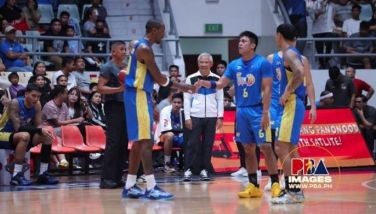- Philstar.com
- The Philippine Star
- Pilipino Star Ngayon
- The Freeman
- Pang-Masa
- Banat
- Interaksyon
- Coupons
SUPPORT PHILSTAR
About Us |
Contact Us |
Advertise |
Privacy Policy |
Member Agreement |
Copyright Notice
Copyright © 2025. Philstar Global Corp. All Rights Reserved
X
+ Follow JOSE HONORATO LOZANO Tag
Array
(
[results] => Array
(
[0] => Array
(
[ArticleID] => 234852
[Title] => What was it like?
[Summary] => What was it like in the middle of the 19th century? What did Manila buildings look like? What did the people do? How were they dressed? Much information on these and other points can be obtained by examining the paintings of Jose Lozano (of Sampaloc and San Miguel) whose best work was done from about 1840 to the 1860s. His paintings are discussed and reproduced in a "coffee-table" book entitled Jose Honorato Lozano. Filipinas 1847 by Jose Ma. Cariño (Ars Mundi, Philippines, 2002).
[DatePublished] => 2004-01-12 00:00:00
[ColumnID] => 133160
[Focus] => 0
[AuthorID] => 1804677
[AuthorName] => Fr. Miguel A. Bernad, SJ
[SectionName] => Opinion
[SectionUrl] => opinion
[URL] =>
)
[1] => Array
(
[ArticleID] => 185084
[Title] => Jose Maria Cariño’s book a priceless heritage
[Summary] => Our most treasured artistic heritage is a letras y figuras painting by Jose Honorato Lozano whose name is not found in the Encyclopedia of the Philippines nor in the Who’s Who in Philippine History by historian Carlos Quirino who was the founding father of the Ayala Library and Museum and director of both the National Museum and National Library. The reason we treasured the painting was that the name it featured was that of Balvino Mauricio who was implicated in the Cavite Mutiny of 1872 and exiled to Guam.
[DatePublished] => 2002-11-23 00:00:00
[ColumnID] => 135432
[Focus] => 0
[AuthorID] => 1115213
[AuthorName] => Alejandro R. Roces
[SectionName] => Opinion
[SectionUrl] => opinion
[URL] =>
)
)
)
JOSE HONORATO LOZANO
Array
(
[results] => Array
(
[0] => Array
(
[ArticleID] => 234852
[Title] => What was it like?
[Summary] => What was it like in the middle of the 19th century? What did Manila buildings look like? What did the people do? How were they dressed? Much information on these and other points can be obtained by examining the paintings of Jose Lozano (of Sampaloc and San Miguel) whose best work was done from about 1840 to the 1860s. His paintings are discussed and reproduced in a "coffee-table" book entitled Jose Honorato Lozano. Filipinas 1847 by Jose Ma. Cariño (Ars Mundi, Philippines, 2002).
[DatePublished] => 2004-01-12 00:00:00
[ColumnID] => 133160
[Focus] => 0
[AuthorID] => 1804677
[AuthorName] => Fr. Miguel A. Bernad, SJ
[SectionName] => Opinion
[SectionUrl] => opinion
[URL] =>
)
[1] => Array
(
[ArticleID] => 185084
[Title] => Jose Maria Cariño’s book a priceless heritage
[Summary] => Our most treasured artistic heritage is a letras y figuras painting by Jose Honorato Lozano whose name is not found in the Encyclopedia of the Philippines nor in the Who’s Who in Philippine History by historian Carlos Quirino who was the founding father of the Ayala Library and Museum and director of both the National Museum and National Library. The reason we treasured the painting was that the name it featured was that of Balvino Mauricio who was implicated in the Cavite Mutiny of 1872 and exiled to Guam.
[DatePublished] => 2002-11-23 00:00:00
[ColumnID] => 135432
[Focus] => 0
[AuthorID] => 1115213
[AuthorName] => Alejandro R. Roces
[SectionName] => Opinion
[SectionUrl] => opinion
[URL] =>
)
)
)
abtest

By
AT RANDOM | By Fr. Miguel A. Bernad, SJ | January 12, 2004 - 12:00am

By ROSES AND THORNS | By Alejandro R. Roces | November 23, 2002 - 12:00am
Recommended
One of the fervent supporters of Philippine sports won’t be missed out in the San Miguel Corp.-Philippine Sportswriters Association (SMC-PSA) Awards Night at the Centennial Hall of the Manila Hotel on Monday.
9 hours ago
TNT vented its wrath on Phoenix, 106-70, to clinch a quarterfinal slot and rejoin a mad scramble for a twice-to-beat incentive in the PBA Commissioner’s Cup yesterday at the Ynares Sports Center in Antipolo.
9 hours ago
BA superstars Scottie Thompson and Jayson Castro, and Paris Olympics veteran Maxine Esteban of fencing know what’s needed to keep Philippine sports on high ground.
9 hours ago
The University of Perpetual Help System Dalta Altas men’s sand spikers and their female counterparts from Letran gun for grand slam championships in the NCAA Season 100 beach volleyball that unwraps on Tuesday at the Subic Bay Freeport Zone’s sand courts.
9 hours ago
The leadership remained in the hands of Thai ace Sadom Kaewkanjana but the day belonged to Filipino Justin Quiban.
9 hours ago
Lotto Jan 24, 2025
EZ2/LVM - 18 5
SUERTRES - 8 4 2
6D Lotto - 5 0 0 7
6/45 Lotto - 35 8 29 26 15 21
P15,038,223.00
6/58 Ultra Lotto - 17 11 52 25 38 47
P49,500,000.00
Forex
February 12, 2018
- 12:00 am
- 12:00 am
1$ : P51.66










